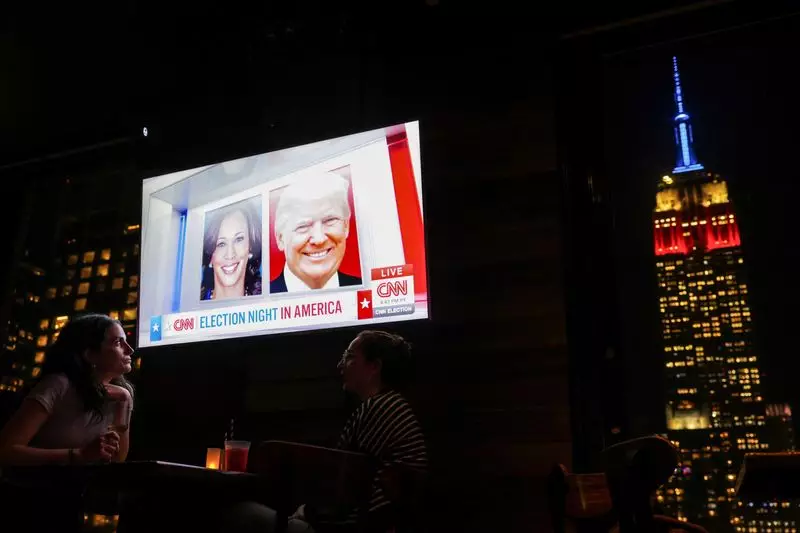On a day marked by volatility, U.S. stock futures and the U.S. dollar found themselves on an upward trajectory as early election results emerged, revealing a deadlock in the presidential race. The initial returns from polling stations painted a mixed picture, with Republican candidate Donald Trump securing victories in states like Indiana and Kentucky, while Democrat Kamala Harris held onto Vermont. This initial ambiguity left investors in a state of heightened alert, resulting in a flurry of market responses as participants reacted to the unfolding political drama.
As the financial markets digested these early results, it became evident that investors were grappling with uncertainty. Trump’s early wins suggested a potential shift in policies that could favor corporate America, especially if tax cuts and sweeping tariffs take precedence. Conversely, Harris’s focus on center-left policies indicated regulatory continuity that could stabilize inflation and bond yields. The immediate market reactions bore the hallmarks of a traditional “Trump trade,” characterized by rising Treasury yields and a strengthening dollar.
The bond market was particularly responsive to the evolving political landscape, with notable increases in Treasury yields. The yield on the 10-year Treasury note experienced a climb to 4.34%, inching closer to a four-month high of 4.388% recorded the previous week. Meanwhile, two-year yields also saw upward movement, reflecting traders’ expectations of imminent policy changes. Analysts noted that as bets began to favor Trump, there emerged a palpable shift in market dynamics, pushing yields and the dollar upward. However, this surge did not come without caution; several market participants expressed skepticism regarding the longevity of these movements, dubbing the fluctuations as mere “little pops” rather than sustained momentum.
The juxtaposition of Treasury yields and stock futures highlighted the cautious nature of investors. While the S&P 500 futures showed a modest uptick of 0.5%, the Nasdaq futures rose by 0.2%, indicating a resilient, albeit jittery market environment. The broader European indices exhibited similar trends, with EUROSTOXX 50 and DAX futures edging higher. Even amid uncertainties, there was an undeniable sense of optimism stemming from previous rallies on Wall Street that day, which bolstered market confidence.
In the realm of currency trading, the dollar index demonstrated notable strength, climbing 0.6% to settle at around 103.98. Such increases had direct implications for foreign currencies, most noticeably the euro, which succumbed to a 0.6% dip against the greenback. Other currencies echoed similar sentiment, with the Japanese yen falling to 152.61 per dollar.
As fluctuations persisted in the forex market, Chinese assets felt the tremors of U.S. tariff threats, with the offshore yuan trading under stress at 7.1227. Implied volatility against the dollar reached alarming levels as investors anxiously calculated the potential fallout of unfavorable trade policies. Chinese stock markets, however, displayed resilience in anticipation of upcoming government meetings regarding local debt approvals, suggesting a degree of confidence among domestic investors amidst broader uncertainties.
Market caution also extended into the commodities sector, where gold prices experienced a slight decline as rising yields and a strengthened dollar pressured the safe-haven asset. The price of gold dropped to $2,738 an ounce, stepping back from a recent record high. Moreover, oil markets reacted cautiously to the intricate web of U.S. electoral outcomes; crude oil prices eased by 0.3% to $71.76 per barrel after preliminary fluctuations amidst forecasts of production disruptions caused by approaching storms in the Gulf of Mexico.
Overall, the financial landscape immediately following the U.S. presidential election results illustrates a complex interplay of investor sentiment, bond market resilience, and currency dynamics. As early results continue to unfold and uncertainties linger, traders and investors remain acutely aware of the rapid changes that can impact their strategies and expectations in the marketplace. The coming days will be crucial in determining the new economic trajectory as the market consolidates its views on which candidate’s policies will ultimately shape the future.

